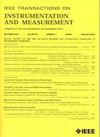不同脉宽激励下高加速度计标定的实验与机理研究
IF 5.6
2区 工程技术
Q1 ENGINEERING, ELECTRICAL & ELECTRONIC
IEEE Transactions on Instrumentation and Measurement
Pub Date : 2025-04-04
DOI:10.1109/TIM.2025.3557827
引用次数: 0
摘要
高精度加速度计是突防引信高速冲击试验和精确爆轰控制的关键。然而,在窄脉宽冲击和宽脉宽冲击条件下,高加速度计的校准结果存在一定的差异,直接影响了加速度计的测量精度和应用场景。本文重点研究了Hopkinson杆窄脉宽激励法与空气炮宽脉宽激励法标定高加速度计灵敏度的差异。定量揭示了这些差异背后的机制,并建立了两种校准方法之间的内在关系。首先,采用两种冲击方法对同一批加速度计进行了标定实验。然后,计算了两种方法标定结果的线性度指标。然后,对两种方法的校准结果差异进行了分析和比较,并对这些差异背后的潜在机制进行了详细的定量研究。最后,通过线性回归分析,建立了两种激励方法标定结果之间的经验公式。结果表明,两种校准方法的灵敏度确实存在差异。这种差异与激励加速度的峰值无关。然而,它主要受激励加速度的脉宽和加速度计的幅频特性的影响。本文章由计算机程序翻译,如有差异,请以英文原文为准。
Experimental and Mechanistic Study on the Calibration of High-g Accelerometers With Different Pulsewidth Excitations
High-precision accelerometers are crucial in high-speed impact testing and precise detonation control of penetration fuzes. Calibration results of high-g accelerometers under narrow and wide pulsewidth impact conditions, however, show certain discrepancies, directly affecting the accelerometers’ measurement accuracy and application scenarios. This article focuses on studying the differences in the calibration of high-g accelerometer sensitivity using the narrow pulsewidth excitation method of the Hopkinson bar and the wide pulsewidth excitation method of the air cannon. The mechanisms behind these differences are quantitatively revealed, and the intrinsic relationship between the two calibration methods is established. First, calibration experiments were conducted on the same batch of accelerometers using both impact methods. Next, the linearity indices of the calibration results from both methods were calculated. Then, the differences in the calibration results of the two methods were analyzed and compared, followed by a detailed quantitative investigation of the underlying mechanisms behind these differences. Finally, an empirical formula was established through linear regression analysis to correlate the calibration results of the two excitation methods. The results indicate that there is indeed a difference in sensitivity between the two calibration methods. This difference is unrelated to the peak value of the excitation acceleration. It is, however, mainly influenced by the pulsewidth of the excitation acceleration and the amplitude-frequency characteristics of the accelerometer.
求助全文
通过发布文献求助,成功后即可免费获取论文全文。
去求助
来源期刊

IEEE Transactions on Instrumentation and Measurement
工程技术-工程:电子与电气
CiteScore
9.00
自引率
23.20%
发文量
1294
审稿时长
3.9 months
期刊介绍:
Papers are sought that address innovative solutions to the development and use of electrical and electronic instruments and equipment to measure, monitor and/or record physical phenomena for the purpose of advancing measurement science, methods, functionality and applications. The scope of these papers may encompass: (1) theory, methodology, and practice of measurement; (2) design, development and evaluation of instrumentation and measurement systems and components used in generating, acquiring, conditioning and processing signals; (3) analysis, representation, display, and preservation of the information obtained from a set of measurements; and (4) scientific and technical support to establishment and maintenance of technical standards in the field of Instrumentation and Measurement.
 求助内容:
求助内容: 应助结果提醒方式:
应助结果提醒方式:


